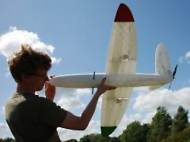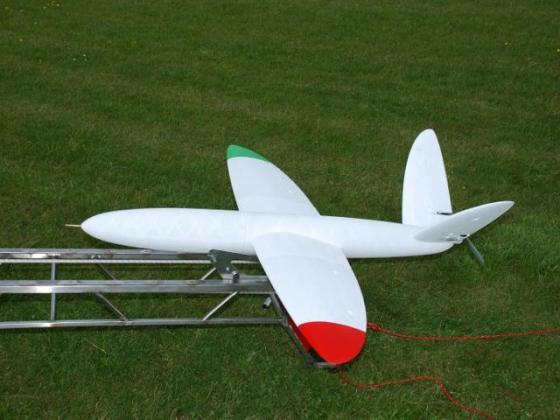SULSA – 3D printed unmanned air vehicle
 Engineers at the University of Southampton have designed and flown a 3D printed aircraft named Southampton University Laser Sintered Aircraft (SULSA). SULSA is an unmanned air vehicle (UAV) whose entire structure has been printed on an EOS EOSINT P730 nylon laser sintering machine, which fabricates plastic or metal objects, building up the item layer by layer.
Engineers at the University of Southampton have designed and flown a 3D printed aircraft named Southampton University Laser Sintered Aircraft (SULSA). SULSA is an unmanned air vehicle (UAV) whose entire structure has been printed on an EOS EOSINT P730 nylon laser sintering machine, which fabricates plastic or metal objects, building up the item layer by layer.
The team has been led by Professors Andy Keane and Jim Scanlan from the University of Southampton Computational Engineering and Design Research group. The electric-powered aircraft has a 2-metre (6.56-feet) wingspan, and a 0.5 kg payload. It has a top speed of nearly 160 kilometers per hour (100 miles per hour), and it is almost silent when in cruise mode. SULSA is capable to fly for around 30 minutes, and it can be assembled in less than 10 minutes with no screws or conventional fasteners.
Laser sintering allows the designer to create shapes and structures that would normally involve costly traditional manufacturing techniques which normally require months to be realized. This technology allows a highly-tailored aircraft to be developed from concept to first flight in days. Another benefit of this approach is the possibility to make radical changes to the shape and scale of the aircraft can be made with no extra cost, since it doesn’t require other tools for manufacture.
“The flexibility of the laser sintering process allows the design team to re-visit historical techniques and ideas that would have been prohibitively expensive using conventional manufacturing. One of these ideas involves the use of a Geodetic structure. This type of structure was initially developed by Barnes Wallis and famously used on the Vickers Wellington bomber which first flew in 1936. This form of structure is very stiff and lightweight, but very complex. If it was manufactured conventionally it would require a large number of individually tailored parts that would have to be bonded or fastened at great expense”, said Scanlan.
The manufacturing process relies on the CAD modeling and laser sintering process. Aside making construction a lot cheaper, the process is also more environmentally friendly, because there’s hardly any waste of material. The entire aircraft comprises out of only 14 parts including four structural parts, one avionics tray, one motor and propeller, two batteries, four servos with their links, a receiver and an autopilot/aerial. The aircraft is also equipped with a miniature autopilot developed by Dr Matt Bennett, one of the members of the team.
“Another design benefit that laser sintering provides is the use of an elliptical wing planform. Aerodynamicists have, for decades, known that elliptical wings offer drag benefits. The Spitfire wing was recognized as an extremely efficient design but it was notoriously difficult and expensive to manufacture. Again laser sintering removes the manufacturing constraint associated with shape complexity and in the SULSA aircraft there is no cost penalty in using an elliptical shape”, said Keane.
SULSA is part of the EPSRC-funded DECODE project, which is employing the use of leading edge manufacturing techniques, such as laser sintering, to demonstrate their use in the design of UAVs which could prove important in fields such as agriculture, earth observation and climate monitoring.










Leave your response!